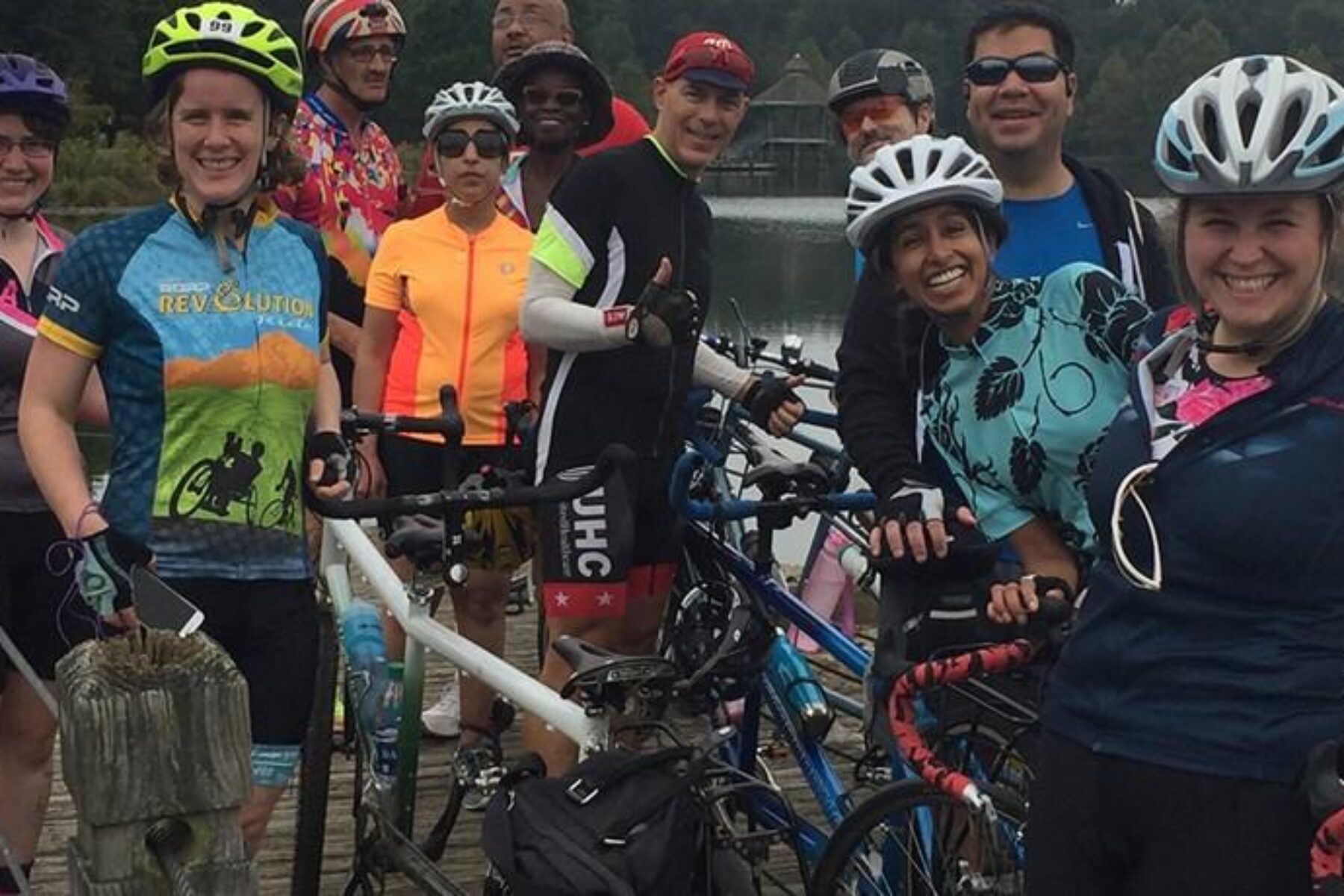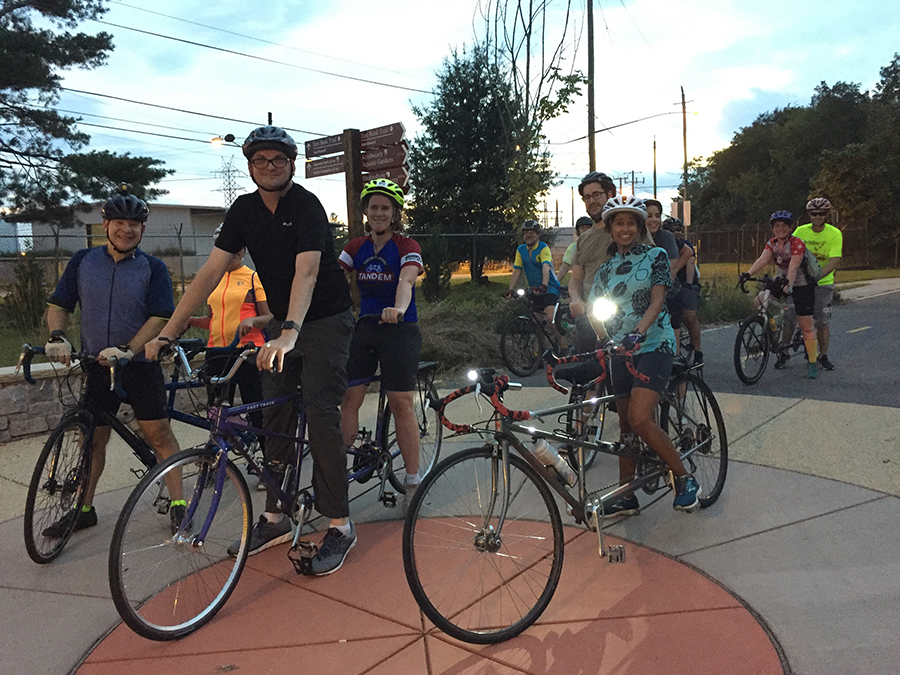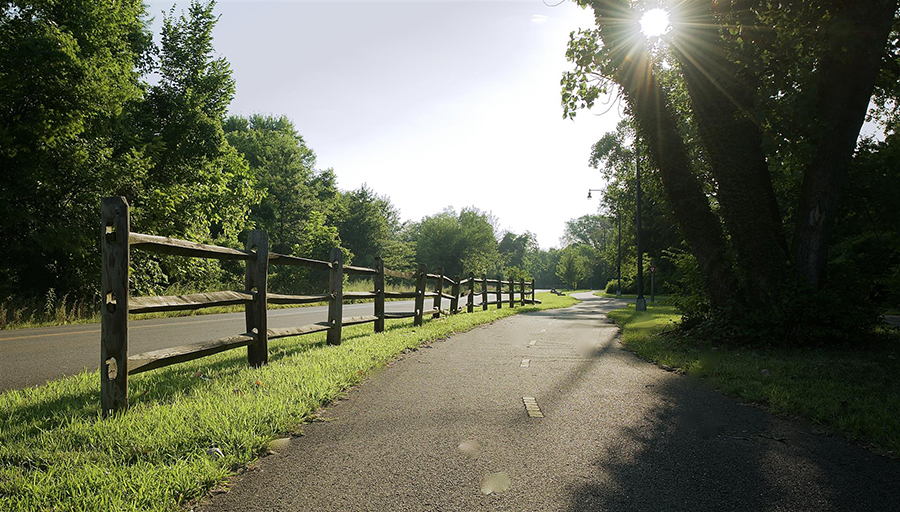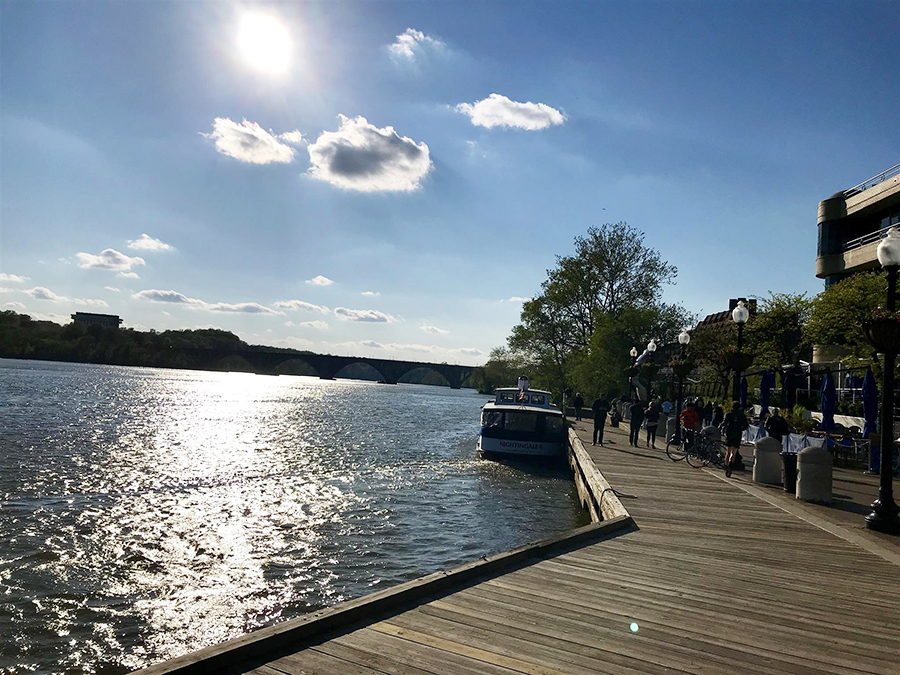Metro Washington Association of Blind Athletes Makes Tandem Connections on DC Trails

“The speed, the freedom, the sense of connection—it’s what made me fall in love with biking,” explained Karla Gilbride. Discussing regular after-work trips down Washington, D.C.’s Capital Crescent Trail on a tandem bike, she describes the hustle and bustle of commuters in Bethesda, the smell of the Potomac River, the feel of the wind whipping past, the cool breezes found near the water’s edge and the sounds of early nightlife in the hip Georgetown neighborhood. “All those experiences packed into just an hour of riding.” What she doesn’t go into are the sights along the trail.
Blind since birth, Gilbride connects with her rides in different ways. The co-founder of MWABA, the Metro Washington Association of Blind Athletes, she takes the stoker position of a two-seater bicycle with a sighted captain up front.
An athlete at heart, Gilbride enjoys rock climbing, backpacking and running, and recently competed in her first triathlon. In all these activities, a sighted partner is called for, whether connected by a lanyard when running and swimming, or taking the captain position on a tandem bicycle.
A Personal Calling

Having fallen in love with tandem biking while living in California’s Bay Area, Gilbride was dismayed upon moving to D.C. to find that there was no group that organized such activities. A public interest attorney, she works to protect consumers and employees, and found it a natural step to marshal the skills she’d honed helping others to co-found MWABA.
“It’s a personal calling,” she said. “I want to give back to the community and make sure other people have the same opportunities I’ve had.”
Formed in 2015, MWABA organizes a range of sports for its athletes—including judo, yoga and goalball, a sport invented by blind veterans after WWII. All along, though, Gilbride aimed to get a bike program rolling, something MWABA achieved in 2017. The biking program is now one of the group’s most popular activities with “riders as young as high schoolers to people in their 70s,” said Gilbride.
What Is GoalBall?
Invented by blind veterans after WWII as way to keep active and develop auditory skills, goalball is played indoors, often on a volleyball court with its net removed. Teams of three attempt to throw a ball—with embedded bells so that its movement can be tracked by ear—into their opponents’ goal that runs the full width of the court. Blindfolds allow partially sighted (and even fully sighted) players to compete on a level playing field. The sport is competed at the Paralympics.
Weekly Rides Draw New Connections on D.C. Trails

The group’s two favored routes are the Anacostia Riverwalk Trail and Capital Crescent Trail on the east and west sides of D.C. MWABA worked with WMATA—the Washington Metropolitan Area Transit Authority—to get special double-sized bike lockers installed at both the Bethesda and Eastern Market Metro stations where the group starts and ends its rides. At only $10 a month for each locker, “it’s the next thing to free in D.C.,” said Gilbride.
Alternating between the two trails for their weekly rides, the group regularly gets up to seven tandems and even the occasional triple that one of the captains provides. Both the Capital Crescent and Anacostia Riverwalk are part of the Capital Trails Coalition, a joint effort between RTC and the Washington Area Bicyclist Association to create an 800-mile network of multiuse trails throughout the D.C. metro region (learn more on RTC’s TrailNation website), and each has its own distinctive personality. Gilbride marvels at the urban diversity the Capital Crescent offers, from Bethesda in the north to Georgetown at the southern terminus.
The Riverwalk, meanwhile, “is a longer trail, so you can customize your ride depending on how far you want to go and how much daylight you have,” said Gilbride. “Parts of it really feel like you’re in the woods. Considering you can get from D.C. to the end on a bike in less than an hour, it has an amazingly rural back-to-nature feel. We’ve had deer run by us on the trail and someone once saw a bald eagle.”
“It’s Just Like Riding a Bike.”

Qudsiya Naqui, a visually impaired attorney herself, is an avid participant in the MWABA program and a fellow lover of the trails. “The Anacostia trail is so beautiful,” she agreed. “And you can take it out pretty far in those summer hours.” By extending the route up to Hyattsville and College Park, she’s leveraged the trail into 50-mile routes she uses as training for 100-mile century rides. “You really get to know the contours of D.C. through biking.”
For someone so enthusiastic about her biking excursions, one would never know she came to embrace two wheels only later in life. “I’m a distance runner—I was never much into cycling,” she admitted. “I biked as a kid, but it wasn’t really my thing.” Naqui met Gilbride through professional channels, learned about the MWABA and decided to give it a try.
Given the amount of coordination, both literal and metaphorical, needed for a captain and stoker to function together (Gilbride notes that tandems are often jokingly called “divorce bikes”), Naqui said she was originally nervous about how she’d work with her captain. “I hadn’t been on a bike in—I can’t remember. And I’d never been on a tandem,” she said. The old adage about recalling long-unused skills held true, though: “It’s just like riding a bike,” she quipped.
She says clear communication between the two riders about starting and stopping, braking and upcoming turns is essential for a smooth ride, “but that’s true of a sighted stoker as well. I took to it pretty easily, but it helped to be paired with skilled cyclists. Everyone I’ve ridden with has been very experienced on half-bikes,” said Naqui, using the tandem bicyclist’s joking reference to those poor bikes with only one seat. She is now a regular weekly rider and enjoys it when her captain “fills in details in the landscape I might not pick up on, or the funny T-shirt of a passing rider. I went from not biking at all to doing 50- or 100-mile bike rides over the last year.”
National Fitness Challenge – U.S. Association of Blind Athletes
The Metro Washington Association of Blind Athletes is participating in this year’s National Fitness Challenge sponsored by the U.S. Association of Blind Athletes and the Anthem Foundation. Over the next several months, USABA will partner with 17 organizations across the United States to provide more than 450 blind and visually impaired youth and adults with opportunities to increase their physical fitness levels and live healthier, more active lives.
“I’m particularly excited that we’ll be able to expand our tandem cycling program and reach even more people next year,” said MWABA co-founder Karla Gilbride. “It gives us a chance to expose National Fitness Challenge participants to a broader range of activities such as our tandem bike program.”
“Participating in this program has deepened our connections to blind and visually impaired athletes around the country and also sparked some good-natured competition within our group.”
The Rush
Beyond the physical benefits MWABA offers, there are fantastic social aspects as well. Naqui was surprised to discover that one of the captains she was paired with, and with whom she now regularly rides, attended her same college, graduating two years after her. “The world is so small!” she said. “Shira Gordon and I recently did my first century on a tandem. I’m so grateful to Karla [Gilbride] and her efforts to organize the group. I’ve made some really great friends and gone to music festivals with them. It’s such a wonderful community I’ve become a part of.”
MWABA’s tandem biking program is definitely a social activity, said co-founder Gilbride. One of the group’s captains is a history buff who likes to share anecdotes about the area with his stoker; another is interested in plants and botany and can describe the foliage and scenery going by. Gilbride and another captain formed what she calls “our tandem book club; we talk about the book we’re reading as we ride.”
Gilbride delights in sharing this love of biking with other blind Washingtonians, helping them enjoy—or even discover—the pastime. “Some of our younger athletes had never been on a bike before,” she said. “There’s a rush, especially for people who’ve never done it, going faster than they’ve ever gone before. They’re jazzed up, they’re energized by it.”
This article was originally created for the Winter 2019 issue of Rails to Trails magazine, which will be published in early February.

Donate
Everyone deserves access to safe ways to walk, bike, and be active outdoors.
